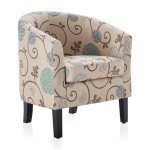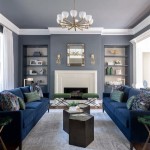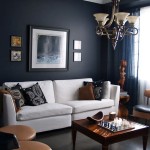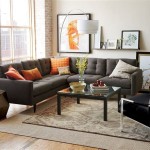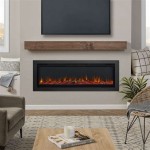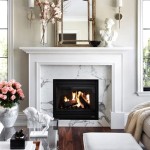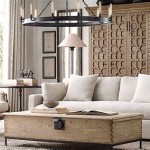Living Room Minimalist Decorating Ideas
Minimalist decorating, particularly in the living room, is a design philosophy centered on simplicity, functionality, and the removal of excess. It advocates for a curated space free from clutter, promoting a sense of calm and order. Achieving a minimalist aesthetic requires careful planning and a commitment to intentionality, focusing on essential elements and maximizing open space. The principles of minimalism extend beyond mere aesthetics, influencing lifestyle choices and encouraging a conscious consumption pattern.
The benefits of a minimalist living room extend to improved mental well-being. A clutter-free environment reduces visual noise, minimizing distractions and promoting relaxation. The absence of unnecessary items allows for a clearer focus, fostering a more productive and peaceful atmosphere. Furthermore, minimalist spaces are easier to maintain, requiring less cleaning and organizing time, thus freeing up resources for other pursuits.
Key Point 1: Embracing Neutral Color Palettes and Natural Light
Color is a fundamental aspect of any decorating scheme, and in minimalist design, neutral palettes reign supreme. Whites, grays, beiges, and creams form the foundation, creating a sense of spaciousness and tranquility. These colors reflect light effectively, making the room appear brighter and more airy. The use of neutral tones allows for greater flexibility in incorporating textures and subtle patterns without overwhelming the space. Accent colors, if desired, should be used sparingly and strategically to add visual interest without disrupting the overall harmony.
The strategic use of natural light is crucial in minimalist living rooms. Large windows and skylights should be maximized to allow ample sunlight to flood the space. Window treatments should be kept minimal, opting for sheer curtains or blinds that allow light to filter through while providing privacy. Avoid heavy drapes or dark-colored blinds, which can block natural light and make the room feel smaller and more enclosed. The integration of natural light not only enhances the aesthetic appeal but also contributes to energy efficiency and a healthier living environment.
Artificial lighting also plays a significant role in establishing the ambiance of a minimalist living room. Recessed lighting, track lighting, and simple floor lamps are preferred over elaborate chandeliers or ornate fixtures. The focus should be on providing functional and aesthetically pleasing illumination without drawing undue attention. Dimmable lights allow for adjusting the brightness to suit various activities and create different moods. The use of warm-toned light bulbs can add a cozy and inviting feel to the space, particularly in the evenings.
Key Point 2: Prioritizing Functional Furniture and Streamlined Design
Furniture selection is paramount in minimalist living room design. Each piece should serve a clear purpose and contribute to the overall functionality of the space. Opt for furniture with clean lines, simple silhouettes, and a lack of ornamentation. Avoid bulky or overly decorative pieces that can clutter the room and detract from the minimalist aesthetic. Multifunctional furniture, such as sofas with built-in storage or coffee tables that can be converted into desks, is particularly valuable in maximizing space and minimizing clutter.
The arrangement of furniture is equally important in creating a minimalist living room. Avoid overcrowding the space with too many pieces. Allow ample space between furniture items to facilitate easy movement and create a sense of openness. Focus on creating a focal point in the room, such as a fireplace or a large window, and arrange the furniture accordingly. Symmetry and balance are key principles to consider when arranging furniture in a minimalist space. Grouping furniture in a cohesive manner can create a sense of order and harmony.
Storage solutions are essential for maintaining a minimalist living room. Invest in storage furniture that seamlessly integrates into the design scheme. Built-in shelves, hidden compartments, and modular storage units can help to conceal clutter and keep the space organized. Avoid open shelving, which can quickly become cluttered and detract from the minimalist aesthetic. Labeling storage containers can aid in maintaining order and easily locating items when needed. Regular decluttering is crucial for preventing the accumulation of unnecessary items and maintaining the minimalist environment.
Key Point 3: Incorporating Textural Elements and Subtle Accents
While minimalist design often emphasizes the absence of ornamentation, it does not necessarily mean that the space should be devoid of personality or visual interest. Textural elements play a vital role in adding depth and character to a minimalist living room. Incorporating various textures, such as natural fabrics, wood, and metal, can create a more inviting and engaging space. A woven rug, a linen throw blanket, or a wooden coffee table can add warmth and visual interest to the room without disrupting the minimalist aesthetic.
Subtle accents can be used to add personality and visual appeal to a minimalist living room. A few carefully chosen accessories, such as a piece of artwork, a vase of flowers, or a collection of books, can add a touch of individuality without overwhelming the space. Choose accessories that complement the overall color palette and design scheme. Avoid cluttering the room with too many small items. Instead, focus on a few larger, more impactful pieces that can serve as focal points.
Plants can also be used to add life and vibrancy to a minimalist living room. Greenery can soften the clean lines and neutral tones of the space, creating a more welcoming and relaxing atmosphere. Choose plants that are easy to care for and that complement the overall design scheme. Avoid overcrowding the room with too many plants. Instead, focus on a few strategically placed specimens that can make a significant impact. The use of natural elements, such as plants and wood, can help to create a connection to the outdoors and enhance the sense of calm and tranquility in the minimalist living room.
Artwork selection should align with the minimalist philosophy. Opt for pieces that are simple, abstract, or feature clean lines. Avoid overly ornate or busy artwork that can clash with the minimalist aesthetic. Consider the size and placement of the artwork carefully. A large statement piece can serve as a focal point, while smaller pieces can be grouped together to create visual interest. The use of neutral frames can further enhance the minimalist effect.
Finally, maintaining a minimalist living room requires ongoing effort and a commitment to decluttering. Regularly assess the contents of the room and remove any items that are no longer needed or used. Avoid impulse purchases and focus on acquiring items that are both functional and aesthetically pleasing. By embracing a minimalist lifestyle, individuals can create a living room that is both visually appealing and conducive to relaxation and well-being.

17 Minimalist Living Room Design Ideas Extra Space Storage

30 Minimalist Living Room Ideas

9 Minimalist Living Room Decoration Tips Decor Modern Scandinavian

Minimalistic Living Room Design Ideas

15 Minimalist Living Room Ideas That Prove Less Is More Hgtv

34 Modern Minimalist Living Rooms Designer Examples Tips

Minimalistic Living Room Interior Design Decor Ideas Berger Blog

30 Minimalist Living Rooms Furniture Ideas For

Minimalistic Living Room Design Ideas

21 Minimalist Living Room Ideas For Malaysians Cube Self Storage

